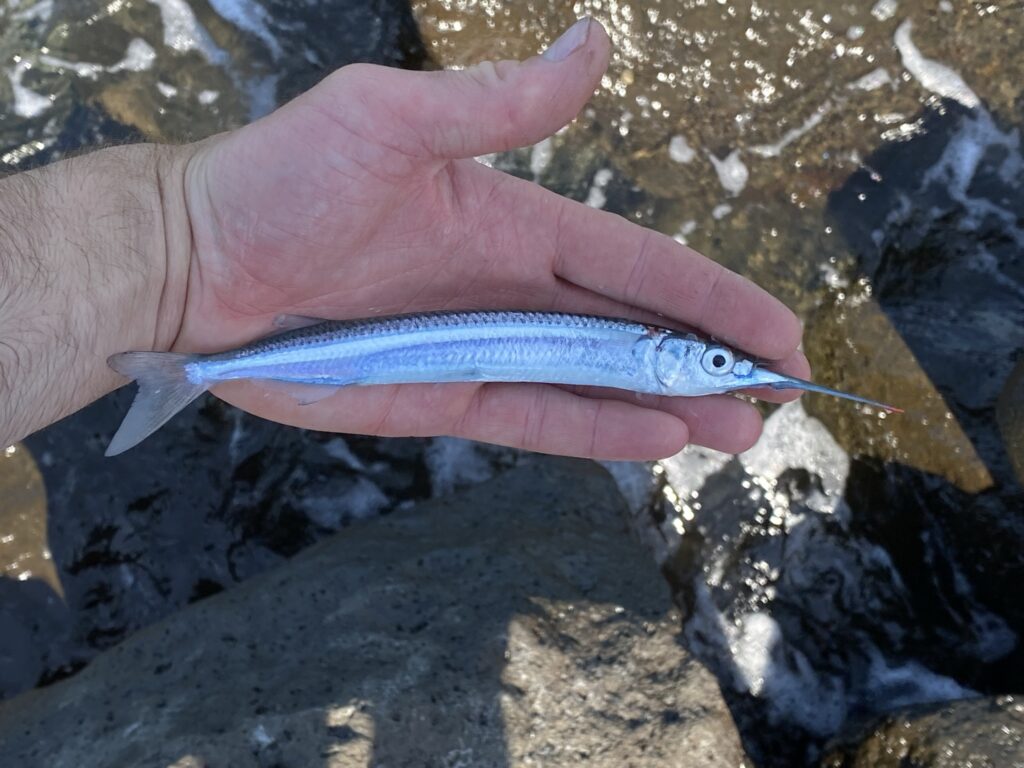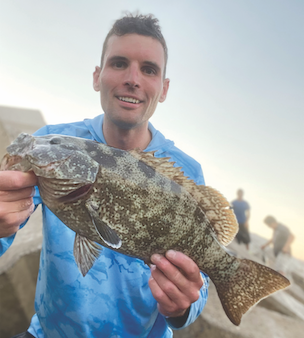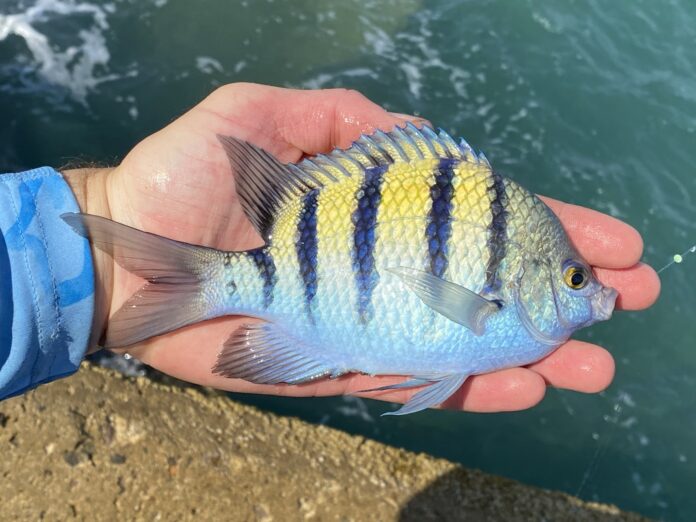PUERTO PEÑASCO, Mex. – The packed dirt barely relented under the weight of my car as I ambled through the desert in the late afternoon. It was only in the mid-90s, but I still felt for the horses available for rent tethered to a trailer at the four-way stop in the middle of the windswept dunes.
Trucks and dune buggies sped past me, their shocks and struts capable of withstanding more jarring than my little RAV-4, a vehicle better suited to hot soccer moms than hot desertscapes.
I came to a full stop, counted to three and drove the final mile. Dust blew with the sea breeze, providing a welcome cool. In the distance, I heard the thrum of a live band covering American pop ballads with only slightly-accented English as hundreds of tourists intently prepared to see some NBA playoffs.
My inventory included a heavy shark/grouper rod, a medium rod for casting lures, a medium-light rod and an ultralight rod for catching bait, as well as a bucket full of bait and water, a gear bag, and my newly-acquired GoPro which I begrudgingly bought to try and build a YouTube audience in order to sell my writing.
Breakwater
My friend, Chris Moore, had sent me to fish this artificial breakwater, a nearly half-mile jetty created to serve as a staging area for shuttle boats trying to ferry passengers out to a cruise ship. The project lost funding before it ever became a reality like so many other construction projects I’d passed on this, my first trip to Old Mexico, a stark reminder of the relative poverty of our neighbors to the south where credit isn’t given out like candy.
I made the long walk to the end of the jetty, which was built by three-dimensional, X-shaped blocks of concrete six or seven feet to a side. These blocks formed walls on both sides of the jetty much too high to easily climb while laden with gear. There was a break at the end, but unfortunately, the grade was too steep to allow fishing. I couldn’t put my gear on the ground for fear of having it swept away, nor could I get on top of the particular blocks haphazardly scattered around me.
Over-encumbered but determined, I removed my flip-flops and opted for the superior grip of bare feet as I began my best practical implementation of parkour. It was some of the most extreme climbing I’ve done and inadvisable barefoot with 50 pounds of gear, but I propelled myself to an X that I hoped marked the spot. I stood on a narrow ledge, filled my water bucket to keep bait alive and got to work.
Living color
For the first half hour, I casted lures. Much like Ke$ha, I failed to get a hit of consequence. Switching to the medium-light rods, I dropped small hooks with shrimp.
Up came a Panamic sergeant, Abudefduf troschelii, the local flavor of a widespread family of damselfishes famous for their aggressive, ubiquitous presence in warmer seas. In less than five minutes, I’d caught ten, so I switched it up, keeping one as live bait and putting that on my heavy rod. I loosened the drag enough that a hard take wouldn’t rip my rod off the flat surface and began casting lures again. Nothing.
At this point, I decided to switch to the ultralight and even smaller hooks — still nothing but sergeants.
About this time, a large subsurface school consisting of thousands of sergeants and halfbeaks (also called ballyhoo) moved into casting distance. The streak of yellow and blue fishes appeared to be flowing just under the surface in a swatch of color about 200 feet across as far as I could see in either direction. Removing the weight, I took advantage of this and quickly caught a ballyhoo — one of the best baitfish on earth. I removed the slightly traumatized sergeant from my live bait rig, tossed it back into the sea and replaced it with a ballyhoo.
Immediately, my live bait snagged as the waves pounded it back into the rocks. I retied, this time without a weight to allow it to drift, and reset the grouper rod as I continued to catch halfbeaks and stockpile them in the bait bucket. The athletic, tubular fish didn’t all stay put in the bucket as several jumped free, but I kept a few at hand by covering the top of the bucket with my flip-flops.
Company
Two local guys came up to fish on either side of me. On a half-mile jetty with two equally accessible sides to fish, they set up right next to me, barely two rod lengths away. SMH. The dude to my left crossed my line for the first of many times, and as I was untangling it, the line started ripping off my big rod.
I propped the ultralight between my legs, grabbed the big rod, tightened the drag and set the hook. I battled raw fury for about a minute and then saw my first leopard grouper, Mycteroperca rosacea, break the surface. The fish was about 7 pounds and broke my heart with a head shake that popped the 7/0 circle hook free.
I reeled in and reset, sacrificing a fresh halfbeak. But it didn’t take long for me to hook up again. This time, I landed a 5-pound grouper, which I kept to eat. Grouper is by far the best warm-seas fish I’ve tried, comparable to halibut in texture but more moist.
For the next hour, I battled rising tides and had to relocate — easier said than done on a jetty composed of carelessly strewn building blocks nearly twice my height. I slipped on a near-vertical face soaked by a recent wave and dropped my gear bag. Mercifully, the bag had fallen away from the water, so I pressed through a watermelon-sized opening, dropped down about 10 feet and grabbed it. Up was tougher than down had been, but I managed, soaked with sweat by the time I’d resettled.

Almost immediately, I hooked another large fish that dove into the rocks and came off. This happened again. And again. Halfbeaks kept jumping out of my bucket, so I had to struggle to get another with the school now 50 feet farther from the jetty and just at the edge of casting distance. If the bait sank more than an inch or two below the surface, it was mobbed by sergeants like a longhaired recruit at basic training.
I’d been keeping track of how many sergeants I’d caught, and No. 49 was the one that caused my brand-new Phenix Elixir ultralight to snap, inexplicably. Not having an ultralight made catching live baits tougher, but I persisted. With my final bait, I caught another leopard grouper, this one closer to seven pounds. Packing up my gear revealed the frisky halfbeaks had knocked my flip-flops into the rising tide. It was probably karmic justice given that I was sacrificing them to catch my dinner.
I’d been keeping some sergeants for a local, and he, in turn, helped me carry my gear to the top of the rockpile. I climbed down and made the half-mile barefoot hike on the gravel path and back to the restaurant for dinner, following the sounds of covered pop anthems and the smell of fresh fish I’d soon contribute to.

For similar stories, read the author’s book, “Fishing Across America,” which is available for preorder now at https://bit.ly/3MKucLp. Sign up for every single Caught Ovgard column at www.patreon.com/CaughtOvgard. Read more for free at caughtovgard.com; Contact luke.ovgard@gmail.com.




